Your glass doors are sticking and noisy. This frustrates end-users and reflects poorly on your quality. I’ll show you how to select the right pulley every time.
To select the best glass door pulley, focus on the material, weight capacity, and design. Ensure the pulley is rated for the door’s weight, choose durable materials like stainless steel, and match the hardware’s finish to the door’s overall aesthetic.
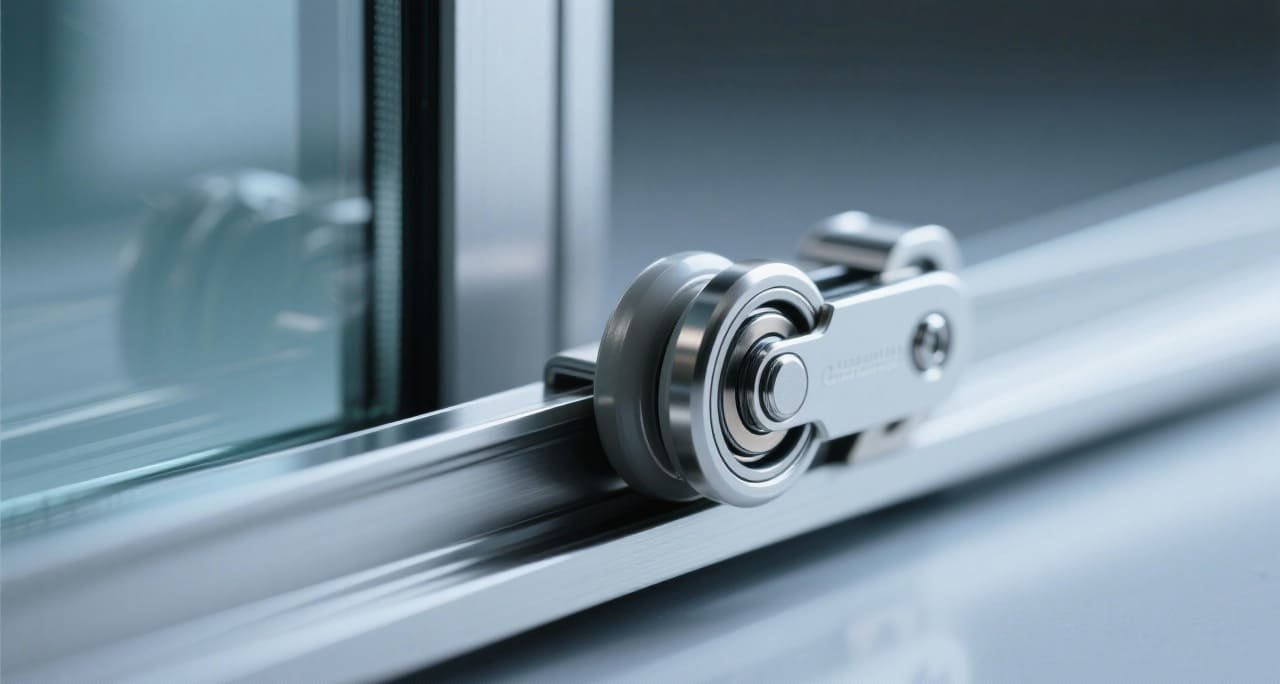
Many people focus only on the glass door’s appearance. They forget the small parts that do all the heavy lifting. The pulley system is the heart of a sliding door, and a bad choice leads to problems down the line. I’ve seen this happen many times in my years as a manufacturer. Buyers get excited about a beautiful glass panel but overlook the hardware that makes it work. But you can avoid these mistakes easily. In this guide, I will walk you through the key factors to consider, drawing from my experience helping professional buyers like you source the best hardware. Let’s dive deeper into what really matters.
Why are pulleys more important than you think?
You focus on the beautiful glass door panel. But soon, customers complain about sticking and noise. This hurts your brand’s reputation and creates costly service calls.
Pulleys are not just accessories; they are the core functional part. They carry the door’s entire weight and determine its smoothness, noise level, and lifespan. Ignoring their quality means your final product is destined to fail prematurely.
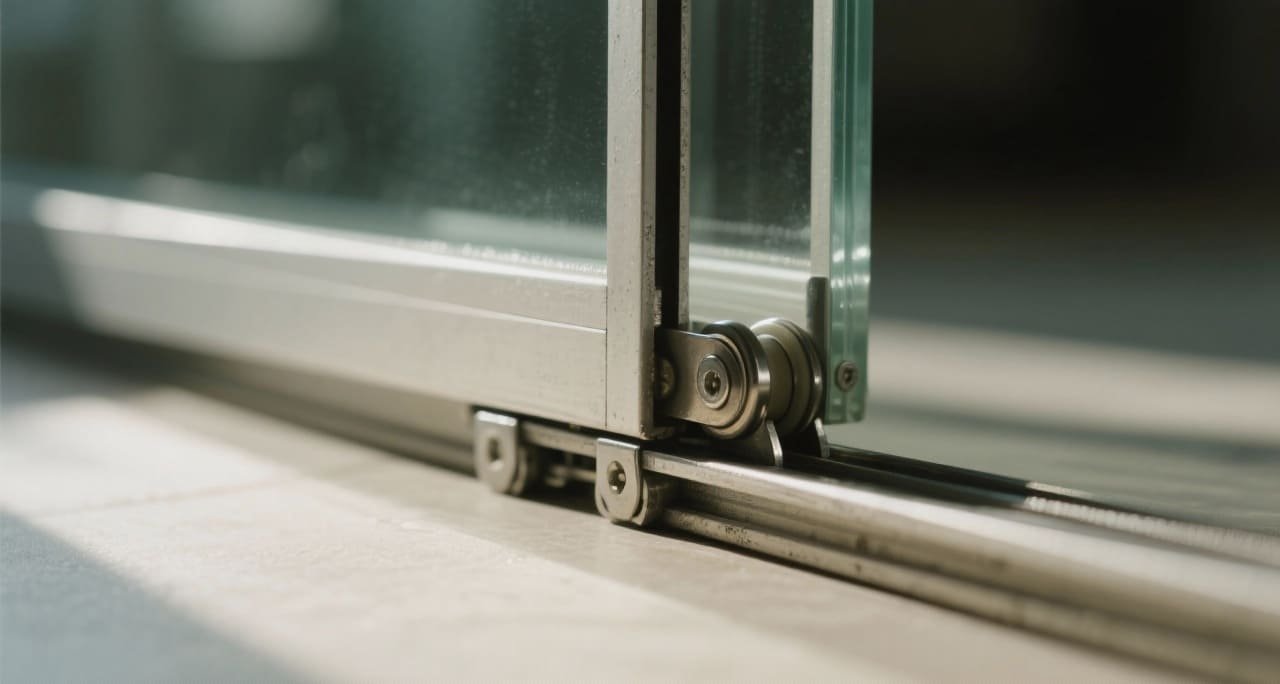
In my factory, we know the performance of a sliding door rests almost entirely on its pulleys. A beautiful glass door with a cheap, failing pulley system quickly becomes a source of frustration. For a buyer like David in UK, this translates into customer complaints, warranty claims, and damage to his company’s reputation. The small savings from a cheap pulley are quickly lost. We stress-test our pulleys for thousands of cycles under heavy loads to guarantee they won’t fail. This is why I always tell my clients that a high-quality pulley isn’t an expense; it’s an investment in the final product’s quality and your brand’s credibility. It ensures the door glides silently and effortlessly for years, which is the premium experience your customers are paying for.
| Feature | Low-Quality Pulley | High-Quality Pulley |
|---|---|---|
| Operation | Noisy, Grinding, Sticks | Silent, Smooth Glide |
| Lifespan | Fails quickly, needs replacement | Long-lasting, durable |
| Customer Impact | Frustration, Complaints | Satisfaction, Positive Reviews |
| Business Impact | Warranty claims, Reputation damage | Repeat business, Strong reputation |
What impact does the weight of glass doors have on pulleys?
You installed a heavy, premium glass door. But you used a standard pulley not rated for the load. Now, the door sags and the pulley is failing.
The door’s weight is the most critical factor. Each pulley has a maximum load capacity. Exceeding this limit leads to deformation, bearing failure, and unsafe operation. You must always choose a pulley rated well above the door’s actual weight.
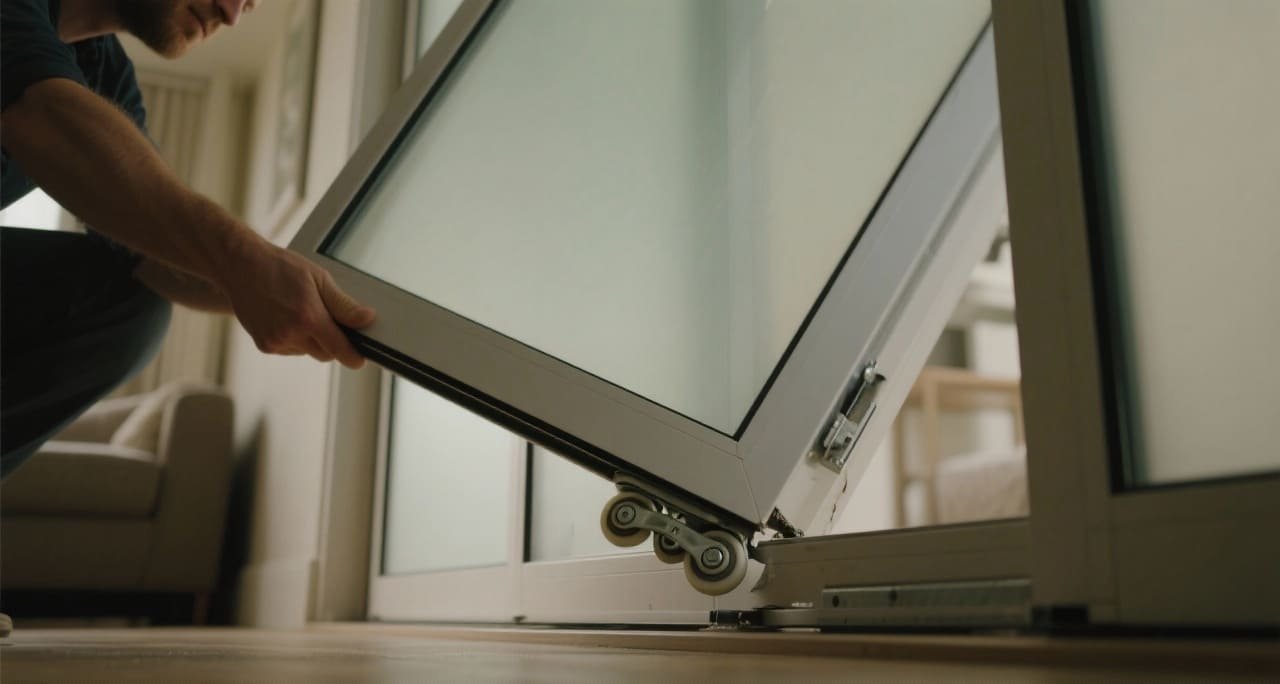
Glass is heavy. A large glass door panel can put a massive, constant stress on the pulley system. You need to think about two things: static load and dynamic load. Static load is the door’s weight when it is not moving. Dynamic load is the stress added when the door starts and stops moving. A weak pulley will deform under the static load, causing the door to sag. It will break down quickly from the dynamic load. At opensliding, we are very clear about the load ratings of our products. I always advise purchasers to calculate the total weight of their door panel and then choose a pulley system with a capacity at least 25% higher. This safety margin accounts for dynamic stress and ensures a long, trouble-free life for the door.
| Door Weight | Recommended Pulley Capacity | Potential Risk of Undersizing |
|---|---|---|
| Up to 40 kg | 50 kg | Wheel deformation, noisy operation |
| 40 kg – 80 kg | 100 kg | Bearing failure, door sag |
| 80 kg – 120 kg | 150 kg | Track damage, complete system failure |
| Over 120 kg | Heavy-duty system (200kg+) | Serious safety hazard, door could fall |
Should you choose stainless steel or plastic door and window pulleys?
You’re choosing between cheap plastic and a more expensive stainless steel pulley. The price difference is big, but what is the real long-term cost of that decision?
For most glass doors, stainless steel is the superior choice for its strength and longevity, especially in humid areas. Plastic is cheaper but risks cracking and early failure, leading to higher long-term costs and customer dissatisfaction.
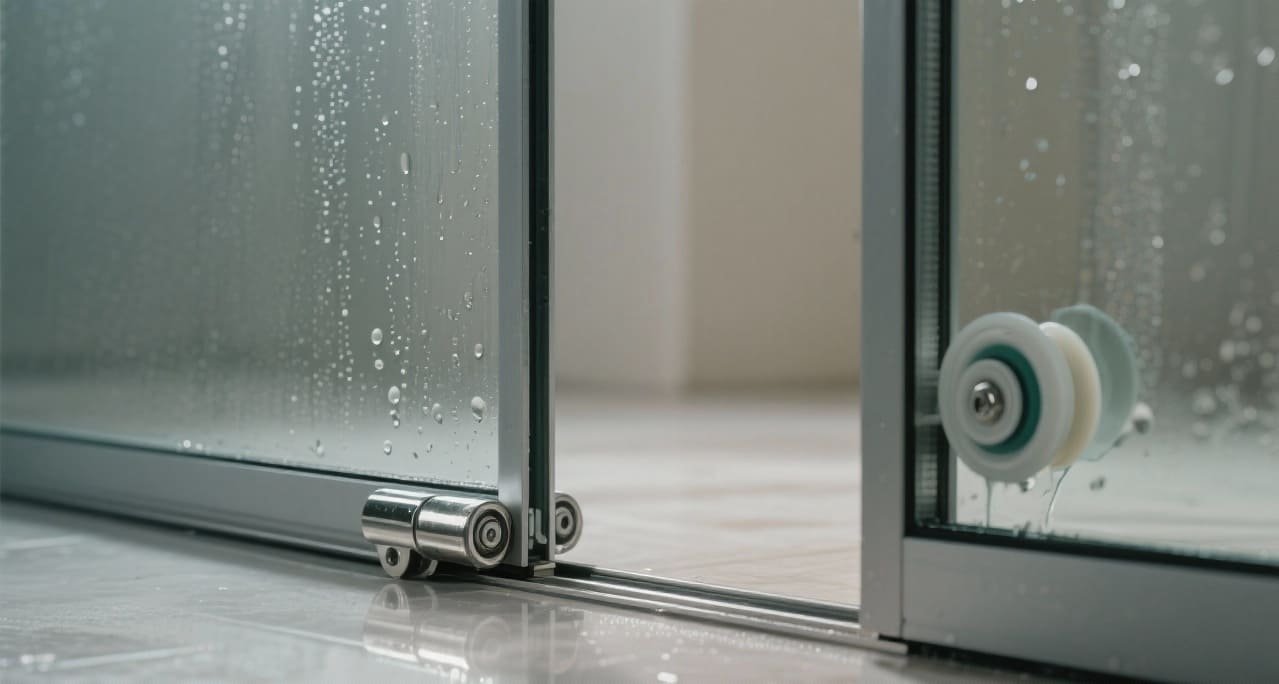
This is a classic debate between initial cost and total cost of ownership. A purchasing manager like David is always looking for cost-effective solutions, but he knows quality is key. A plastic pulley might save a few dollars per unit on a large order. However, that saving disappears the first time a customer calls to complain about a broken or noisy door. Plastic becomes brittle over time, especially with exposure to sunlight or cleaning chemicals. It can crack under the heavy, constant load of a glass door. Stainless steel, on the other hand, provides unmatched strength and durability. It doesn’t deform or rust, especially if you use a quality grade like 304. The door will feel more solid and operate smoothly for much longer. The real cost of the plastic pulley includes the replacements, the service calls, and the damage to your brand. For professional applications, stainless steel is the smarter investment.
What are the best materials for specialized door and window pulleys?
Your door pulley rusted in the bathroom. Another one made of plastic cracked in the sun. Choosing the wrong material for the job is a very costly mistake.
The best material always depends on the application. Stainless steel offers excellent rust resistance for wet areas. High-quality nylon provides a quieter glide. For the best performance, a hybrid pulley with a steel body and nylon wheel is often ideal.
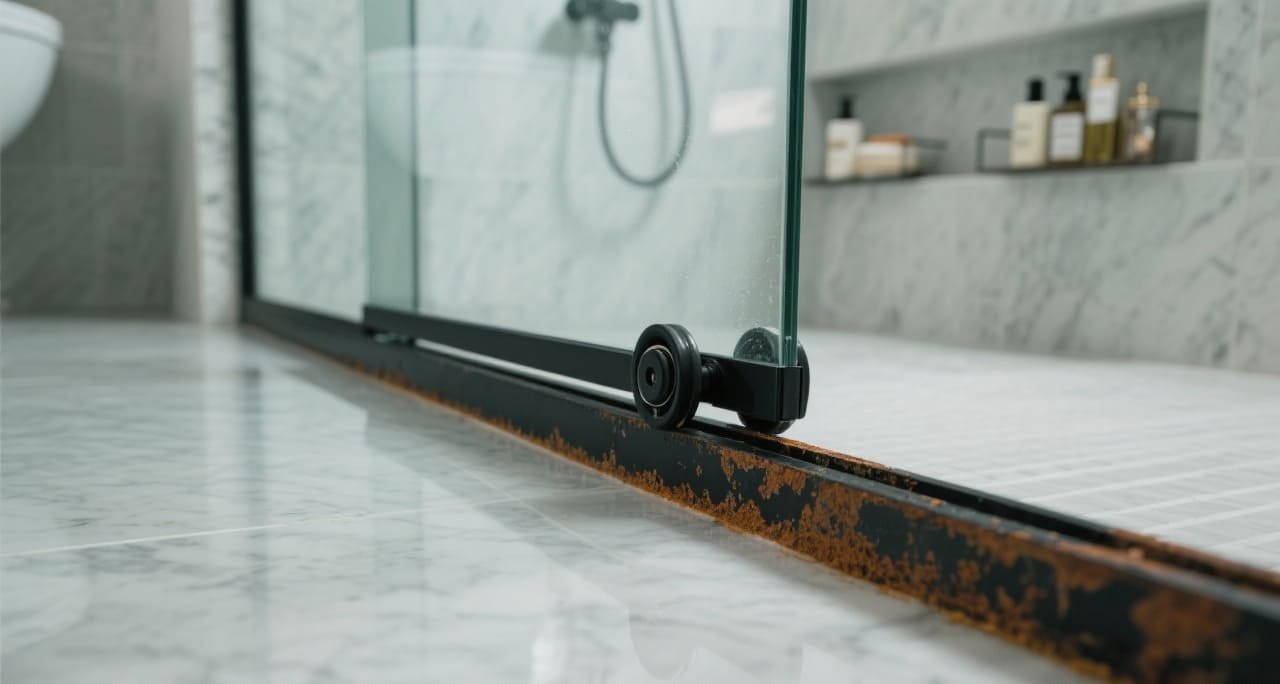
As a manufacturer, we work with a range of materials because no single material is perfect for every situation. It’s about matching the material to the environment and the performance you need.
Common Pulley Materials
- 304 Stainless Steel1: This is my top recommendation for most glass door applications. It has fantastic strength and resists rust, making it perfect for bathrooms, kitchens, and even some exterior uses. It provides that solid, premium feel.
- High-Density Nylon2: The main advantage of nylon is its quiet operation. The wheels glide smoothly and almost silently along the track. It’s a great choice for interior doors, like in bedrooms or wardrobes where noise matters.
- Zinc Alloy: This is a good middle-ground option. It’s strong and more cost-effective than stainless steel, but it doesn’t have the same level of corrosion resistance. It works well in dry, interior spaces.
- Cheap Plastic: I tell all my clients to avoid this for glass doors. It simply cannot handle the weight and stress over time. It is only suitable for very lightweight applications like small cabinet doors.
In our factory, some of our most popular products are hybrid systems that combine a strong stainless steel body with smooth, quiet nylon wheels. This gives our customers the best of both worlds.
How do you match pulleys to your door’s design?
You found a strong, functional pulley, but it looks out of place. A clashing hardware finish can ruin the entire aesthetic of a high-end door project.
To match pulleys, first coordinate the finish with other hardware like handles and frames. Then, evaluate the pulley’s profile. A concealed pulley works best for minimalist designs, while a decorative one can become a feature.
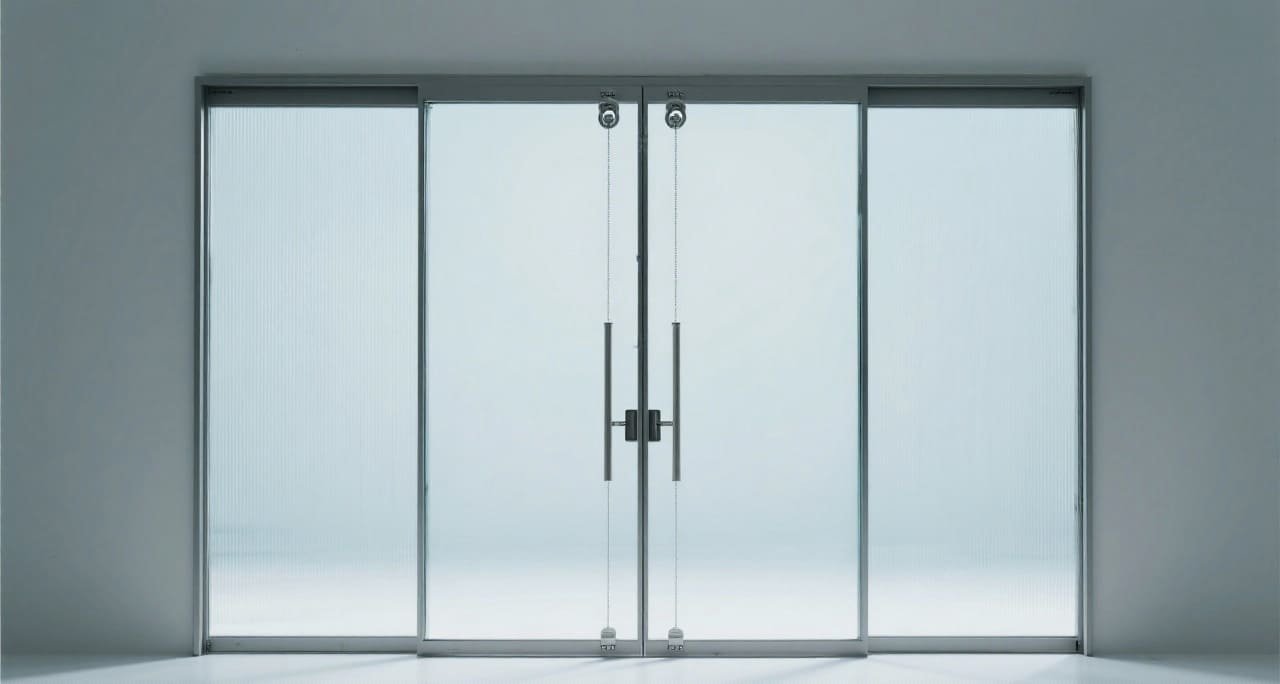
Aesthetics are just as important as function for the final product. A buyer knows that their clients are not just buying a door; they are buying a complete look. The hardware must feel like part of the design, not an afterthought. Here is a simple process to follow.
Step 1: Coordinate the Finish
The pulley’s finish should match or complement the door frame and handles. We offer finishes like brushed nickel3, matte black, and polished chrome to match popular design trends. Consistency is what creates a high-end look. A beautiful door with mismatched hardware looks cheap.
Step 2: Consider Visibility
For a modern, frameless glass door, a concealed pulley system4 is best. The hardware is hidden inside the track, creating a clean look where only the glass is visible. For other styles, like barn doors or industrial designs, an exposed, decorative pulley can become a key part of the style itself.
Step 3: Match the Scale
The pulley’s design and structure must align with the door’s style. A bulky, heavy-duty pulley will look wrong on a slim, elegant door. I always tell my clients to request samples. This allows them to see our hardware in person and hold it against their doors. This ensures a perfect visual and functional match before committing to a large order.
Conclusion
Selecting the right glass door pulley is simple. Prioritize material quality, match the pulley to the door’s weight and style, and you will ensure a smooth, lasting installation.
Explore the advantages of 304 Stainless Steel for glass doors, including its strength and rust resistance, ideal for various applications. ↩
Discover why High-Density Nylon is favored for interior doors, focusing on its quiet operation and smooth gliding features. ↩
Explore this link to understand why brushed nickel is a popular choice for modern interiors, enhancing both aesthetics and durability. ↩
Learn about concealed pulley systems and their advantages for achieving a sleek, modern look in your home. ↩

